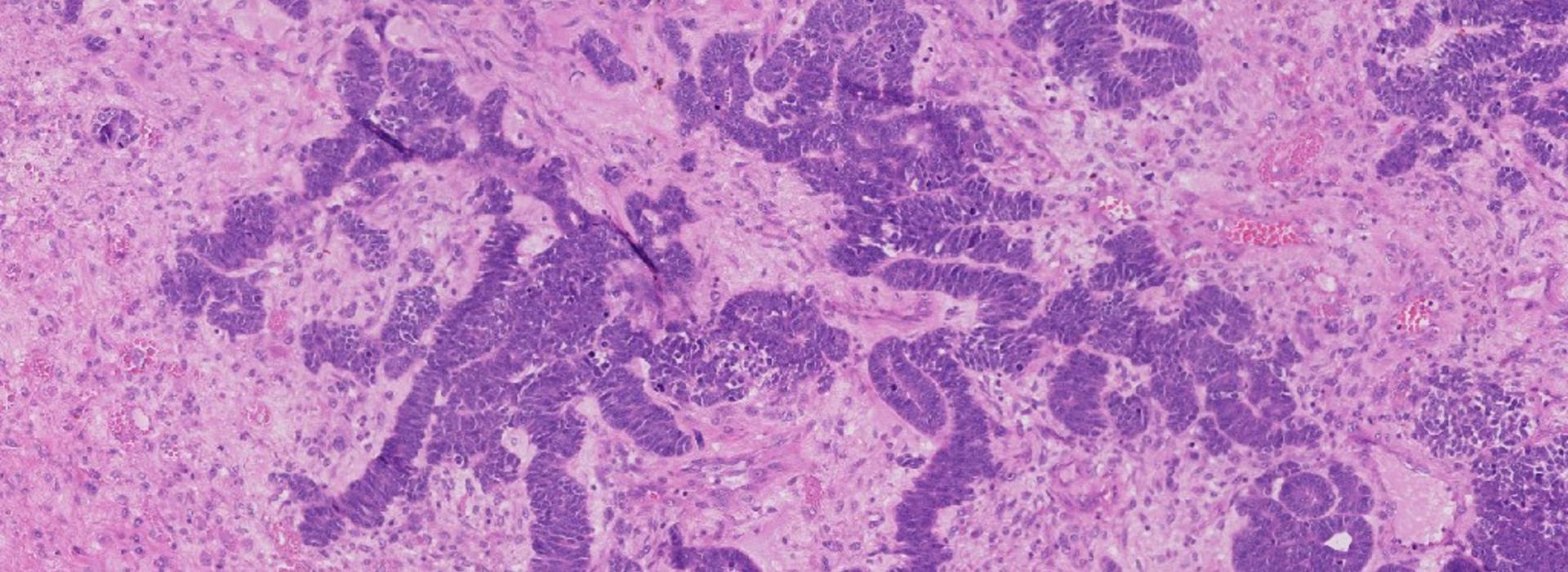
U of M-led research identifies predictor of outcomes, chemoresistance for ovarian cancer patients
MINNEAPOLIS/ST. PAUL (2/27/2024) — In a major scientific breakthrough, newly published research from an international consortium led by the University of Minnesota’s Masonic Cancer Center has the potential to transform the landscape of ovarian cancer treatment.
Published today in JAMA Network Open, the findings indicate that ovarian cancer patients with high levels of stroma within their tumors are twice as likely to exhibit chemoresistance to the conventional standard of care. Stroma is the non-cancerous tissue that provides support to tumors.
The team, led by Drs. Martina Bazzaro and Emil Lou, built on their previous report that shows a marker known as high tumor stroma proportion (TSP) — identified using routine biopsy and surgical samples from patients with ovarian cancer — is a powerful predictor of patient outcomes and chemoresistance in ovarian cancer. TSP is the proportion of non-cancer tissue in a tumor compared to the portion containing cancerous cells.
“What sets our research apart is its simplicity and potential clinical impact. While previous studies have linked the expression of stromal genes to poorer progression-free and overall survival rates in ovarian cancer, our study demonstrates that a straightforward assessment of tumor-stroma proportion can serve as a valuable biomarker for clinical outcomes,” said Martina Bazzaro, PhD, an associate professor at the U of M Medical School and Masonic Cancer Center researcher.
The study, which was performed in close collaboration with researchers from the University of Tubingen in Germany and the Karolinska Institute in Sweden, was conducted independently in two cohorts. One group included 103 cases from The Cancer Genome Atlas, while the other group had 192 cases from the University of Tubingen. All patients had surgery to remove their cancer and were given chemotherapy as part of their treatment.
The research team examined digital images of patient tissue samples and divided tumors into two categories based on the amount of stroma tissue they contained. Some tumors had less than 50% stromal tissue, while others had 50% or more stromal tissue. A statistical analysis led to the conclusion that tumors with high TSP were associated with patients with poorer outcomes and were more likely to develop resistance to chemotherapy.
“This research marks a significant step forward in the fight against ovarian cancer, and we are committed to translating these findings to the forefront of clinical practice for patients diagnosed with this cancer,” said Emil Lou, MD, PhD, an associate professor at the U of M Medical School, Masonic Cancer Center researcher and medical oncologist with M Health Fairview. “Our work paves the way for utilizing a readily obtainable, effective and relatively inexpensive biomarker to help tailor more effective treatments based on their individual tumor profiles.”
The researchers strongly advocate for the standardization of TSP measurement and its integration into prospective clinical trials as a predictive biomarker for drug resistance. To further validate the findings — both retrospectively and prospectively — the team aims to leverage the resources of national cooperative groups that administer clinical trials at multiple sites throughout the country to perform further ultimate validation of TSP as a biomarker that should be used in routine practice. They also plan to incorporate artificial intelligence into their approach and develop an algorithm based on TSP for more precise outcome predictions.
This work was supported by the U.S. Department of Defense, the Minnesota Ovarian Cancer Alliance, the American Cancer Society, the Randy Shaver Cancer Research and Community Fund, the Mu Sigma Chapter of the Phi Gamma Delta Fraternity at the University of Minnesota and the Litman Family Fund for Cancer Research.
###
About the University of Minnesota Medical School
The University of Minnesota Medical School is at the forefront of learning and discovery, transforming medical care and educating the next generation of physicians. Our graduates and faculty produce high-impact biomedical research and advance the practice of medicine. We acknowledge that the U of M Medical School is located on traditional, ancestral and contemporary lands of the Dakota and the Ojibwe, and scores of other Indigenous people, and we affirm our commitment to tribal communities and their sovereignty as we seek to improve and strengthen our relations with tribal nations. For more information about the U of M Medical School, please visit med.umn.edu.
About the Masonic Cancer Center, University of Minnesota
The Masonic Cancer Center, University of Minnesota, is the Twin Cities’ only Comprehensive Cancer Center, designated ‘Outstanding’ by the National Cancer Institute. As Minnesota’s Cancer Center, we have served the entire state for more than 30 years. Our researchers, educators, and care providers work to discover the causes, prevention, detection, and treatment of cancer and cancer-related diseases as well as provide whole-of-life care and resources for survivorship. Learn more at cancer.umn.edu.



